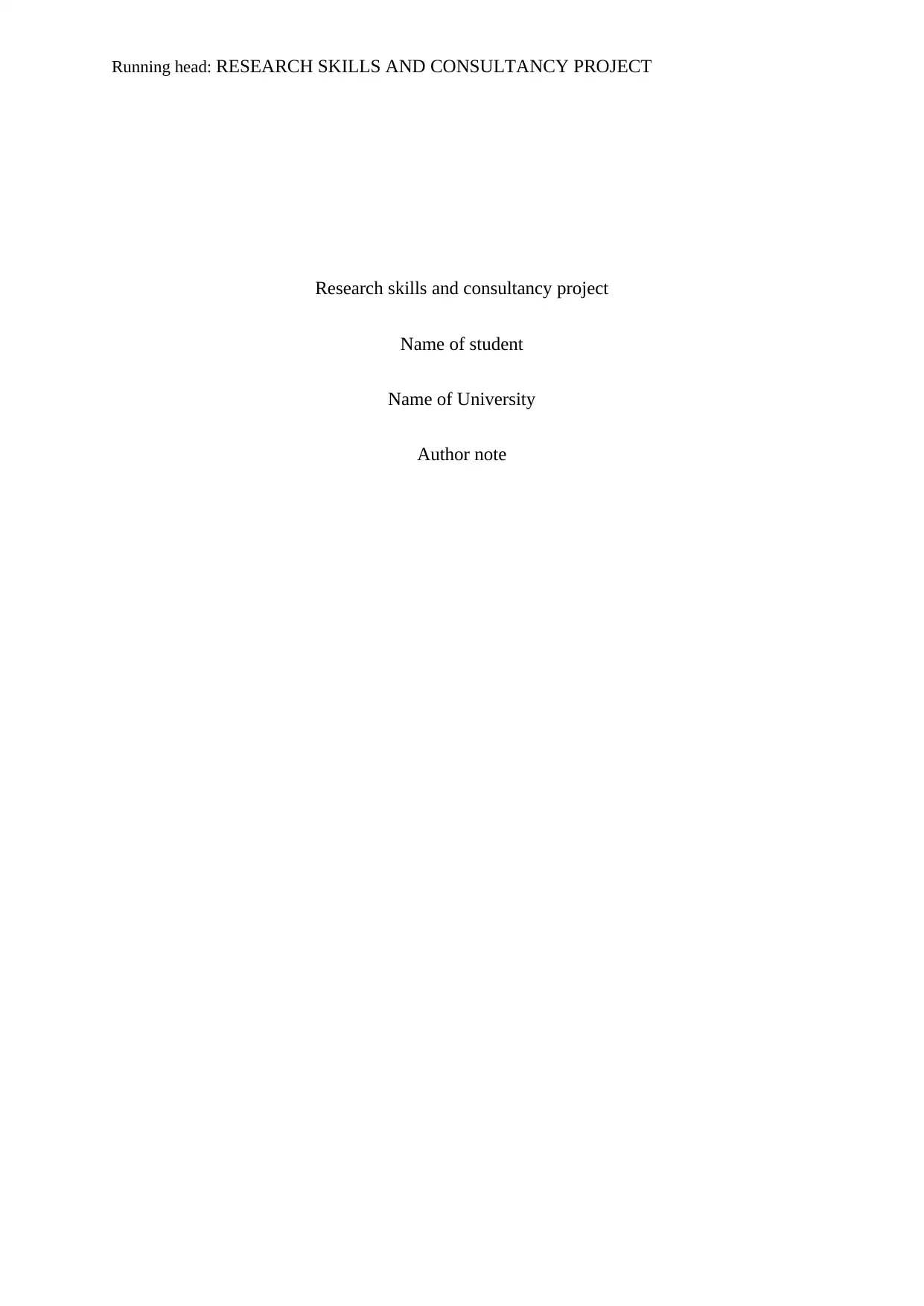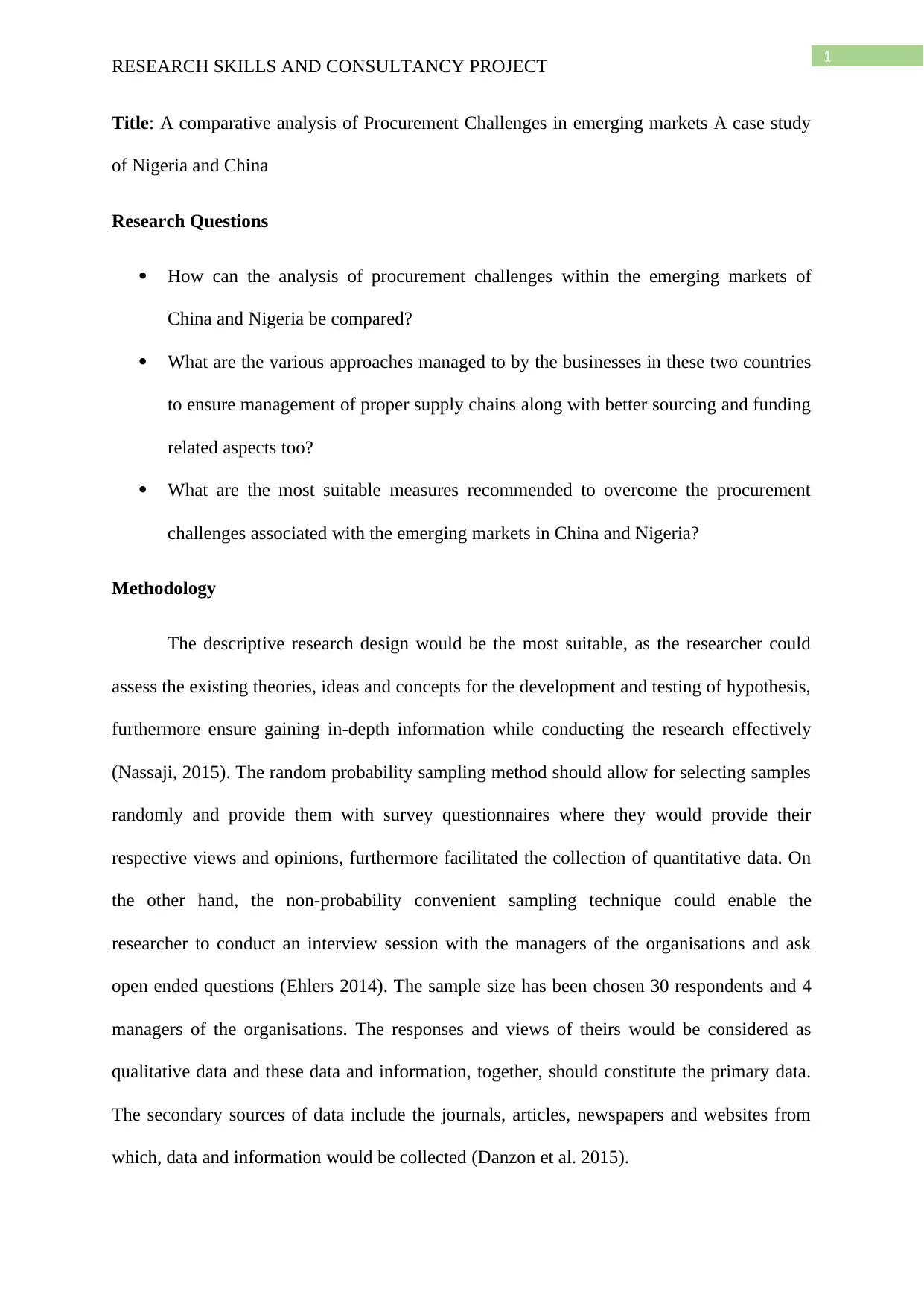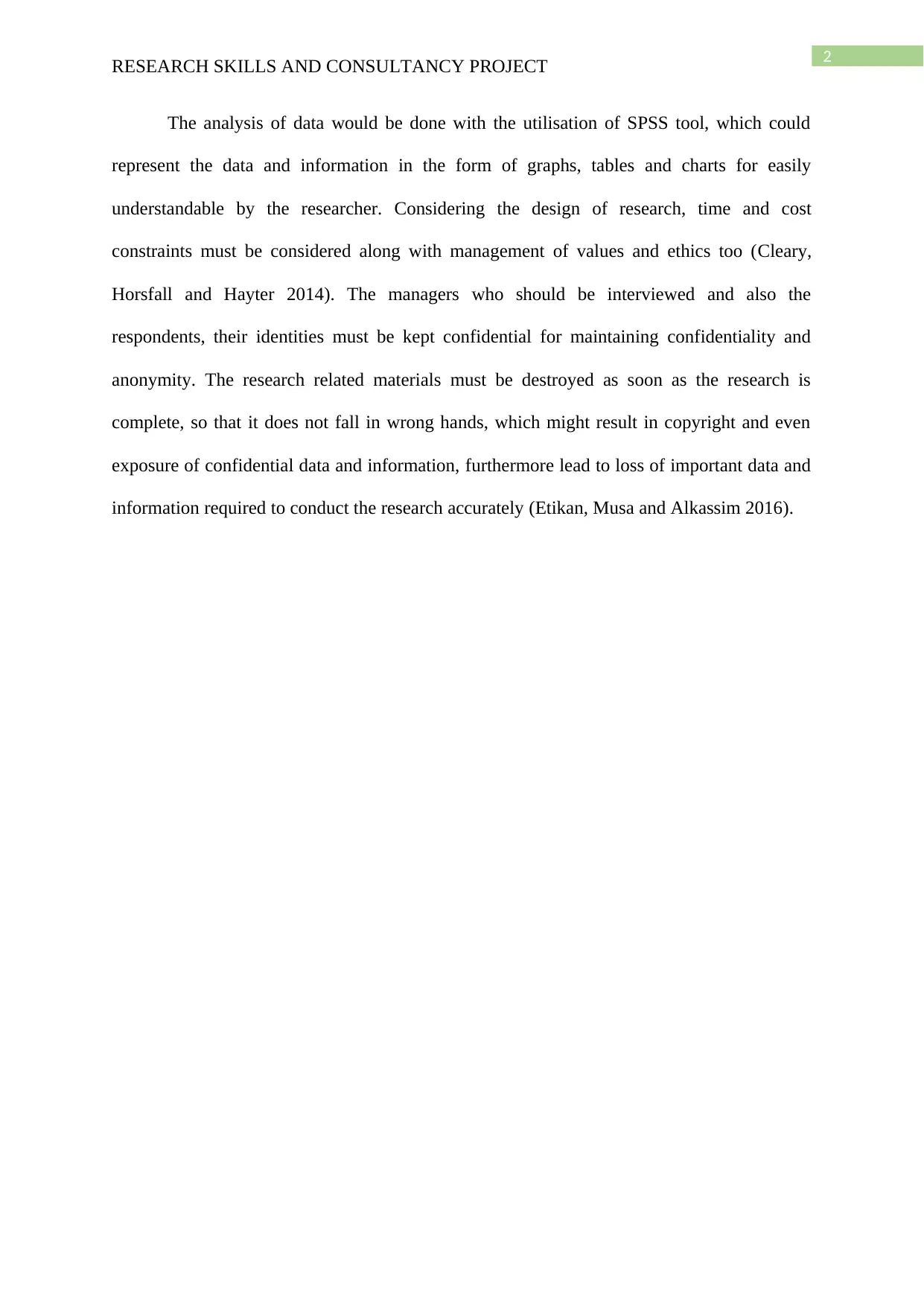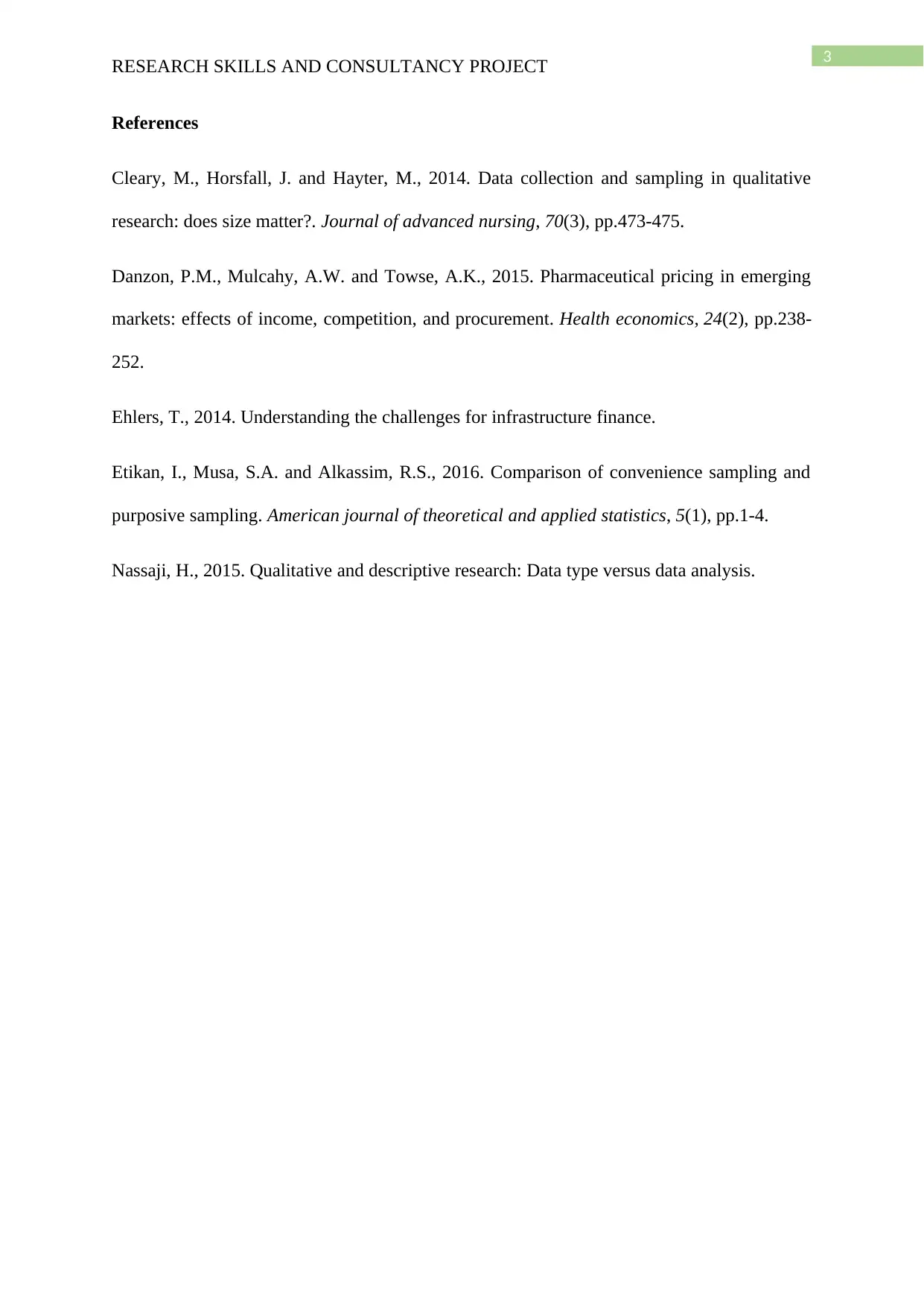A Comparative Analysis of Procurement Challenges: Nigeria & China
VerifiedAdded on 2022/10/15
|4
|608
|13
Presentation
AI Summary
This presentation analyzes procurement challenges in the emerging markets of Nigeria and China. It begins by outlining the research questions, which focus on comparing procurement challenges, assessing supply chain management approaches, and recommending solutions. The methodology employs a descriptive research design, utilizing both quantitative and qualitative data collection methods. Quantitative data is gathered through surveys with a sample size of 30 respondents, while qualitative data is collected through interviews with 4 managers. Data analysis will be conducted using SPSS, and the research emphasizes ethical considerations such as confidentiality and data protection. The study aims to provide insights into effective procurement strategies and overcome challenges in these emerging markets. The assignment is part of the RSCP7004 Research Skills and Consultancy Planning module.
1 out of 4








![[object Object]](/_next/static/media/star-bottom.7253800d.svg)